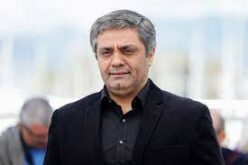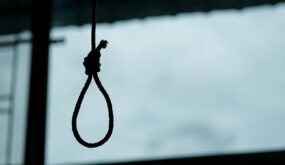Al-Monitor – Iran’s judiciary said female journalists Niloufar Hamedi and Elaheh Mohammadi have been charged with “collusion to act against national security and propaganda against the Islamic Republic.”
The two have been in detention over their reporting on Mahsa Amini’s case, the 22-year-old woman whose death in morality police custody in September has triggered a popular protest movement.
“A decision on their cases is nearing the final stages,” judiciary spokesperson Masoud Setayeshi announced at a press briefing in Tehran on Nov. 8, without specifying if proceedings against the two journalists will be public. Under Iran’s penal code and given past instances of political dissidents with the same charges, the two reporters could face up to five years in jail if convicted.
Both journalists unsettled Iranian intelligence authorities by lifting the lid on Mahsa’s death. Hamedi wrote about how Mahsa slipped into a coma following her arrest by a hijab-enforcing squad. And Mohammadi fully covered Mahsa’s funeral in her Kurdish hometown of Saghez, where protests gathered steam and ballooned into nationwide unrest.
A joint statement by Iran’s Intelligence Ministry and the Intelligence Organization of the Islamic Revolutionary Guard Corps (IRGC) last month announced that the pair had received training by the US Central Intelligence Agency (CIA). The claim has been hit with a wave of condemnation from Iran’s journalistic community.
The unrest, marking the longest consistent period of street protests since the 1979 inception of the Islamic Republic, has seen demonstrators openly call for the downfall of the ruling establishment and that of Supreme Leader Ayatollah Ali Khamenei. The foreign-based Human Rights Activists News Agency (HRANA) has reported the killings of 321 protesters, among them 50 children, at the hands of riot police and the hard-line Basij militia formed by loyalists.
Iranian authorities deny the charge. And in the latest, government spokesman Ali Bahadori Jahromi drew renewed anger, saying “it would have been a piece of cake for police forces to use live rounds on the protesters.” He argued that the youths on the streets are not enemies but “our wrongdoer children.”
With nearly 15,000 reported to have been arrested, the clampdown was stretching far beyond street protests and has now reached those who spray-paint slogans on walls. The IRGC-linked Tasnim news agency said undercover IRGC intelligence agents have launched drones to identify and eventually arrest a group of those individuals in a southern town.
Continuing acts of defiance
As girls and women release one video after another showing their hijab-less walks in the capital, Tehran, and other cities, similar acts of defiance are being made at some formal levels as well. Niloufar Mardani, a female skater from the Iranian national team, appeared without a headscarf on the podium when she received her gold medal at a competition in Turkey.
Considered a breach of strict hijab codes under Iran’s sports regulations that apply to women athletes at both domestic and international events, the move prompted a statement of “disapproval” from Iran’s Sports Ministry. It noted that Mardani’s participation was without authorization and not part of a national team attendance.
Mardani’s gesture followed a similar appearance last month by Elnaz Rekabi, a member of the women’s national climbing team, who competed without a headscarf at a South Korean tournament.
‘Why departure? Stay and take back’
Iran’s most prestigious academic center, Sharif University of Technology, saw a massive sit-in by protesting students and professors on Nov. 8. The university has been at the forefront of the protests, with dozens of its students hooded and taken away at a raid by plainclothes militia last month. Sharif is also known for an alarming mass exodus of its brightest students and graduates to Western institutions. “Why departure? Stay and take back [the homeland],” the students chanted from an anthem that has recently gone popular among protesters. “Our dark night will eventualize in dawn,” they sang.
As similar rallies were held in a number of other universities, protest groups issued calls for a day of nationwide remembrance for some 100 victims of “Bloody Friday” in which the victims were reportedly shot dead by government forces in the southeastern impoverished city of Zahedan late September.
And amid the unrest, Iran’s national currency, the rial, suffered as its value against the US dollar nosedived to the lowest ever recorded in Iranian history. The plunge has been particularly linked to the prospects of the revival of the Iran nuclear deal against a backdrop of the protests. US officials have declared that they are focusing on the unrest rather than “waste our time” on the deal, which Iran has expected to bring sanctions relief and economic windfalls. Iran’s Central Bank, however, says stability will return to the foreign market “in the next few days.”
As the rage over the crackdown was coupled with economic grievances and the rial depreciation, pictures went viral of a lone protester in central Tehran holding up a poster showing the rial value. The poster read: “Does anyone hear my voice? Does it even matter if I’m dead or alive?”
 Shabtabnews In this dark night, I have lost my way – Arise from a corner, oh you the star of guidance.
Shabtabnews In this dark night, I have lost my way – Arise from a corner, oh you the star of guidance.



